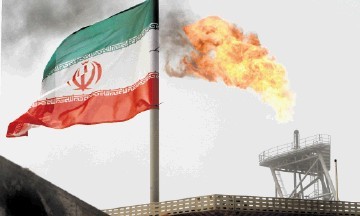
Developing political tensions between Iran and Saudi Arabia have resulted in fluctuating oil prices, with the price of Brent crude having risen to $38.50/bbl, its highest level for three weeks.
This follows Saudi Arabia’s recent announcement that it was severing diplomatic ties with Iran, due to recent attacks on its Embassy in Tehran in response to the execution of a prominent cleric.
These developments have potentially significant repercussions for the oil & gas industry, given that Iran and Saudi Arabia are two of the most influential members of the Organisation of the Petroleum Exporting Countries (OPEC).
Despite the current oil price downturn, which has seen the price of Brent crude fall from an average of $97.47 in 2014 to a low of $35.26 in December 2015, the organisation recently decided against the introduction of an output ceiling.
Saudi Arabia is keen to preserve its market share, with DW expecting total oil production to increase steadily over the next six years, reaching just over 12.1 mmbbl/d in 2021.
Following the signature of the Joint Comprehensive Plan of Action (JCPOA) agreement in July 2015, and anticipated removal of international sanctions, Iran is eager to re-enter the market and increase its oil export volumes.
The Iranian government has an ambitious target to raise its oil production to 5.7 mmbbl/d by 2018. Although DW takes a conservative view relative to this target, it expects total Iranian oil production to rise at a 4% CAGR through to 2021.
This will provide further potential pressure on a market which is already over-supplied, and could pose an obstacle for other key producers within the Middle East such as Saudi Arabia. In October 2015, the World Bank lowered its 2015 forecast for crude oil prices from $57/bbl to $52/bbl, due in part to expectations that Iranian oil exports would rise once international sanctions were lifted.
Despite initial spike in oil prices, as the market reacted to political developments between the countries, continued tension between Iran and Saudi Arabia could potentially place further downward pressure on the oil price in the short-to-medium term, should it impact cooperation within OPEC.
Notably, any future decisions to constrain output in order to support the oil price would be likely to require the agreement of both Saudi Arabia and Iran.
Conversely, further deterioration of political relations between the two countries could impact supply along the Strait of Hormuz, which accounts for approximately 30% or 17 mmbbl/d of oil transported via maritime routes.
Concerns for supply via this route have already grown, following airstrikes initiated by Saudi Arabia against rebels in Yemen.
The current government in Yemen is supported by Saudi Arabia, whereas the rebels have been linked with the Iranian government.
The recent severing of diplomatic ties between Iran and Saudi Arabia could therefore exacerbate pre-existing tensions between the two countries in the region.
Any disruption to transit along the Strait of Hormuz could potentially reduce the current oversupply in the market, thereby increasing commodity prices. This could be compounded by lower output from non-OPEC producers, with DW forecasting declining production for both the USA and Russia in 2016.
Despite this recent volatility in the oil price, analysts have maintained a negative outlook regarding the recovery of commodity prices in the short-to-medium term.
In its Short-term Energy Outlook, published in December 2015, the Energy Information Administration (EIA) expects average Brent spot prices to recover only marginally from $53/bbl in 2015 to $55.78/bbl in 2016.
RBC also forecast a slow recovery in average Brent prices from $53/bbl in 2015 to $80/bbl by 2019.
Katy Smith is a researcher at Douglas Westwood
